As the years have gone by, my ankles and knees start to hurt when I even talk about running any sort of distance. No matter how thick the cushioning was on the shoes I bought, I'd always end up with pain after a run - and sometimes, even after a walk. Then, I had the chance to test the the Primus Trail II FG by Vivobarefoot, designed to encourage a more 'natural' movement style while both walking and running, with less impact going through your precious muscles and joints.
Could these be the shoe that could transform my runs and hikes into something that felt good again, despite a seriously thin midsole?
I'll admit here: I have previously worn other barefoot shoes. However, they've always felt too loose on the toe-box, and their wide soles have slapped the ground, making me sound a like particularly unwieldily duck running from the jaws of a fox. When wearing the Primus Trail II, this is simply not the case.
The slightly more rigid, “Firm Ground,” (FG) aspect changes the game: I've found that over three solid months of testing, these give newfound enjoyment and sense of primitive freedom - so far away from the high stack, deep pillows I used to wear. Let's get into some details.
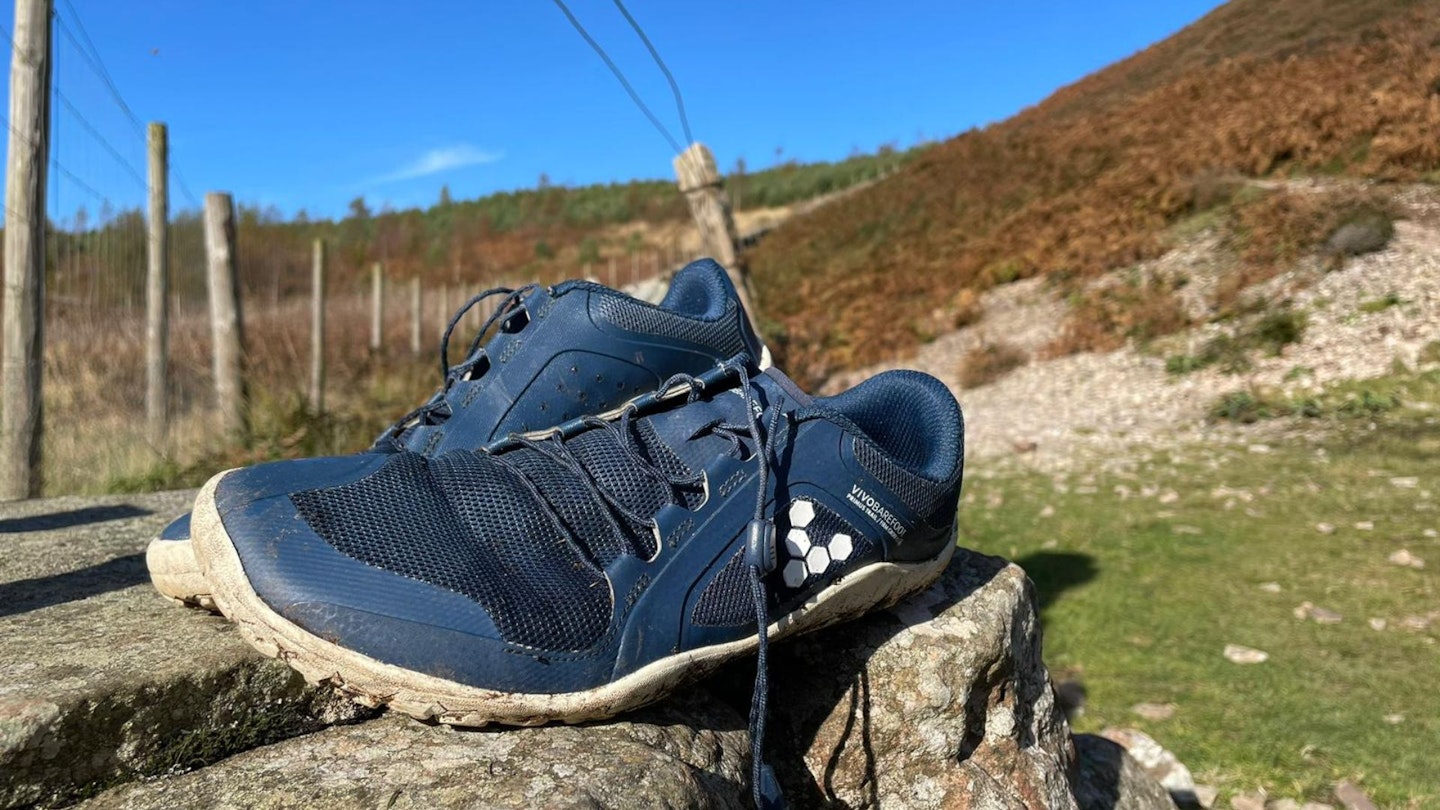 LFTO
LFTOwww.vivobarefoot.com
Pros
- Lightweight
- Grippy
- Hugely erganomic
- More sustainably made than other shoes
Cons
- Manual lacing system would be better than toggle
- Not warm or waterproof enough for boggy winter runs
| Women's sizes | 4-9 |
| Mens sizes | 6-14 |
| Junior sizes | 3-5 |
| Preschool sizes | 8-11 |
| Waterproof version: Tracker IIIs all-weather | Yes |
| Weight | 220g (UK 5) |
| Drop | 0mm |
| Stack height | 5.5mm |
| Lugs | 2.5mm |
| US price | $170 |
Upper
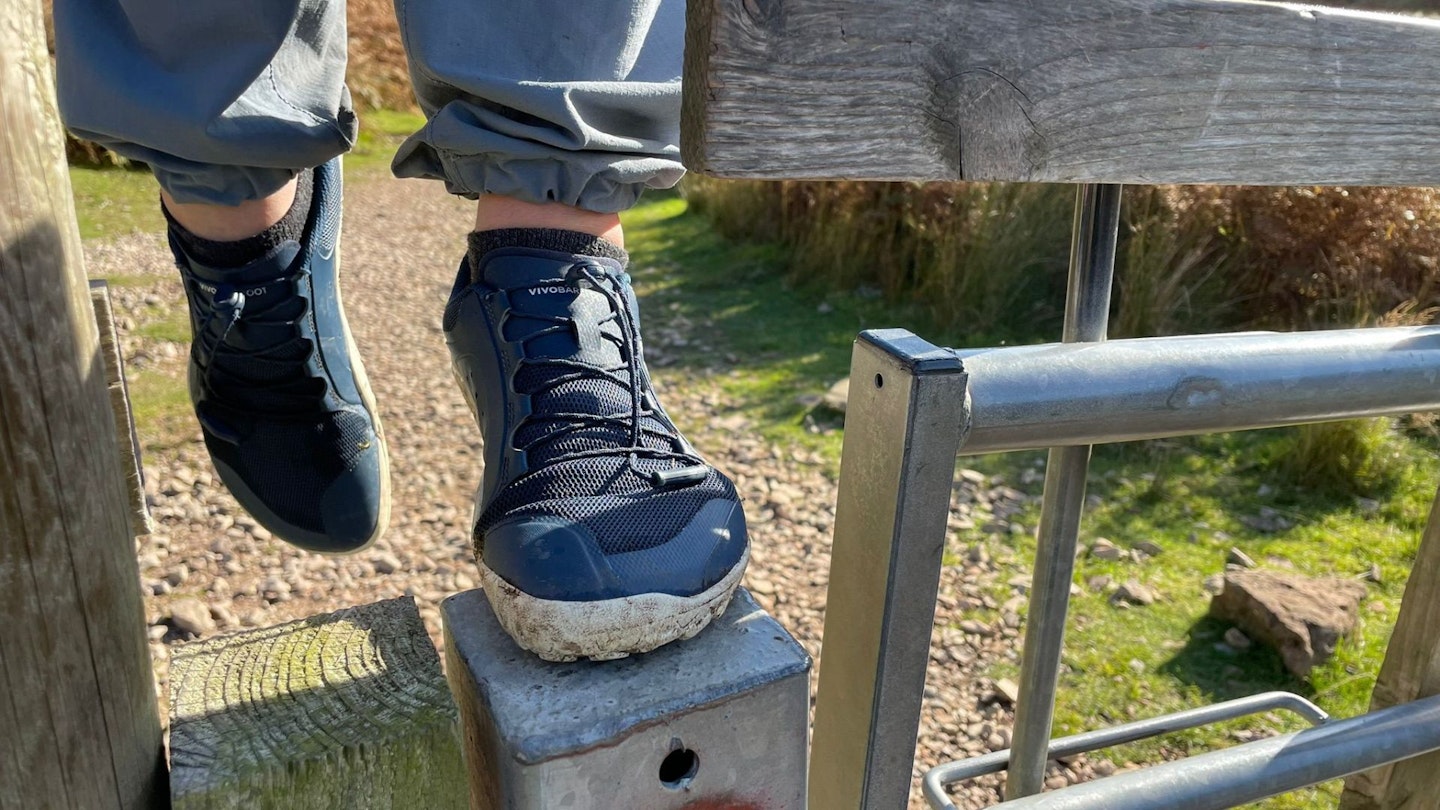
Vivobarefoot will claim that the mesh on the upper portion of the shoe is, “Breathable, lightweight and comfortable,” and they’re not wrong. While the majority of the foot is exposed to this aerating mesh, the outer edge is protected by a polyurethane layer, a material used by firefighters in the construction of much of their equipment.
Basically, when you stand in a shallow bog, or inevitably trip up the stairs due to a slightly larger toe-box that you’re used to, your foot and the shoe itself is protected from water, scuff and general wear and tear. The only downside to this is when wearing the shoe in heavy rain or colder conditions where there is little to no insulation as the upper mesh is the only difference between a high-performance running shoe and a comfortable sandal.
Midsole
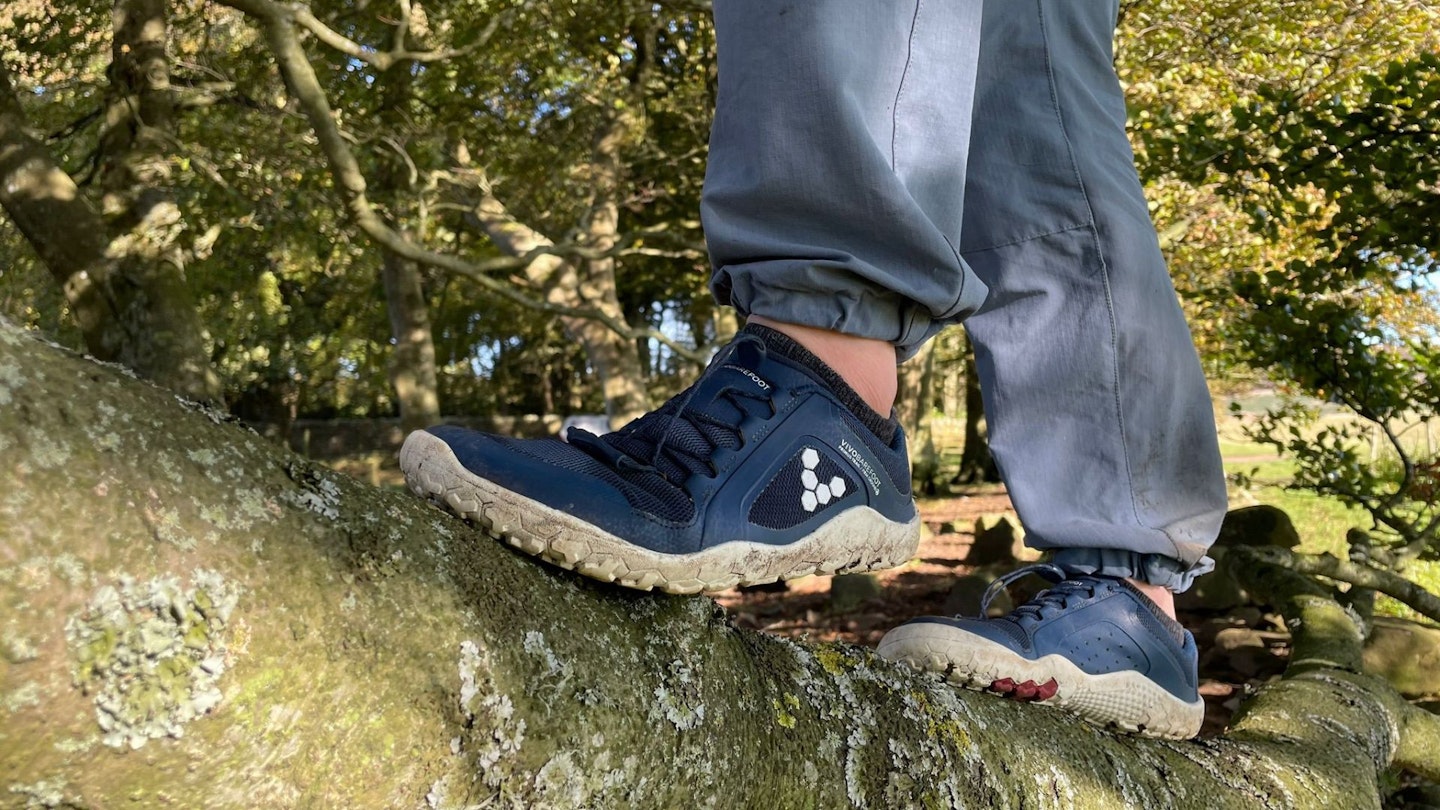
Right, so the whole point of a ‘barefoot’ shoe is that the sole is thin, flexible and akin to the thick feet of the Tarahumara tribe, the world’s best long-distance runners. As expected, you can certainly feel the ground beneath your feet but, rather than a hindrance, the active ortholite performance insole of the Primus Trail II allows you to reap the benefits of barefoot biomechanics without having to worry about dodgy foot placement when running along your favourite trails.
There isn’t much in the way of cushioning, and although it’ll take some time to get used to this if you aren’t familiar with a minimalist shoe, your body will adapt and you’ll run the way that nature intended, (Provided you aren’t heel striking along a tarmac road).
Outsole
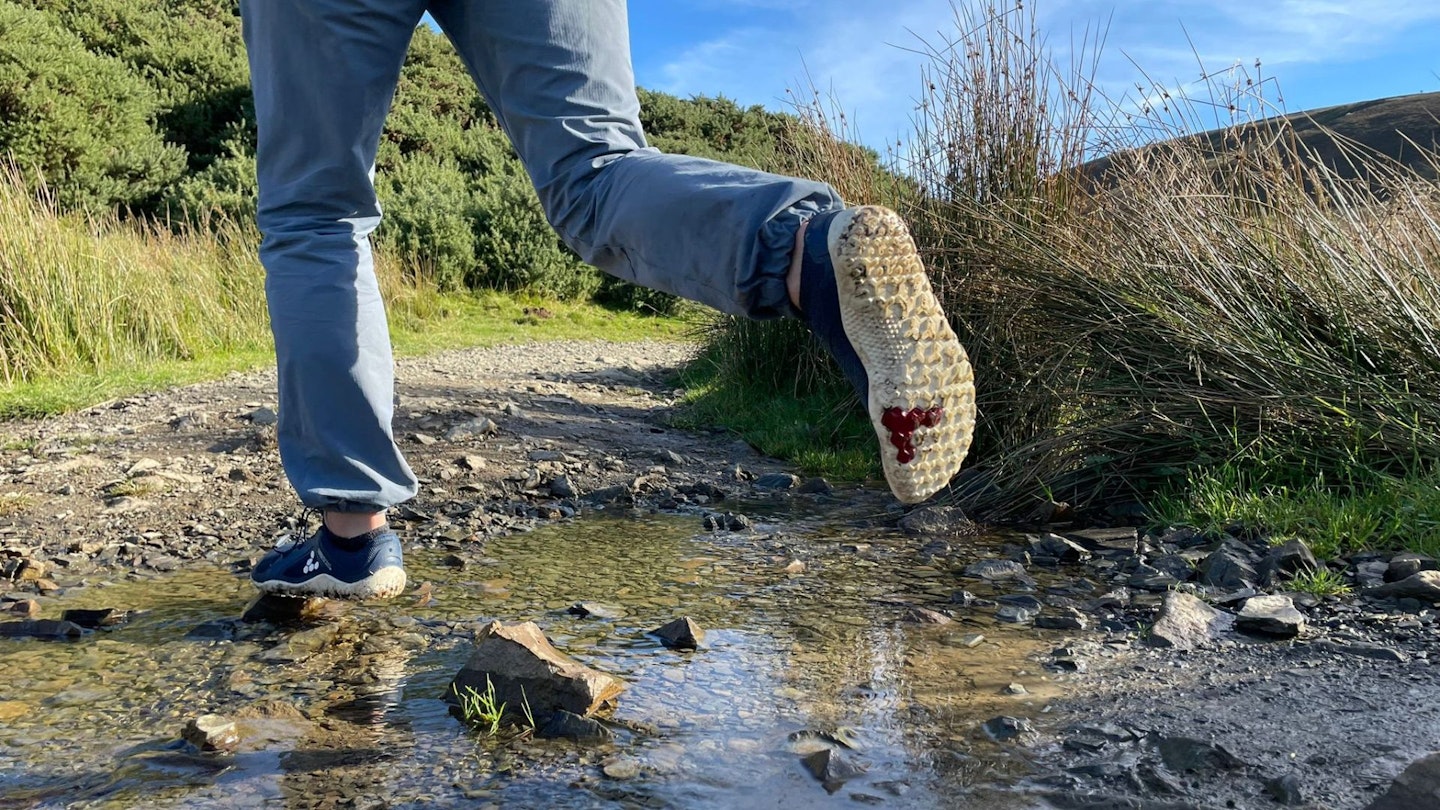
In theory, the wider the outsole, the more physical contact you have with the trail that you’re running on and the more grip you’ll have. At least, I’ve found this to be true while ‘banking’ hard around each corner on a dreich, Scottish day.
The non-marking rubber grip allows for optimal traction although, like most shoes, it’ll take a wee while for the shoes to ‘break-in’ fully. While perfect for a trail shoe, the three-pointed shape pattern on the underside of the shoe could potentially result in lesser grip on flatter surfaces compared to a flat, ‘single-piece’ rubber sole.
Features
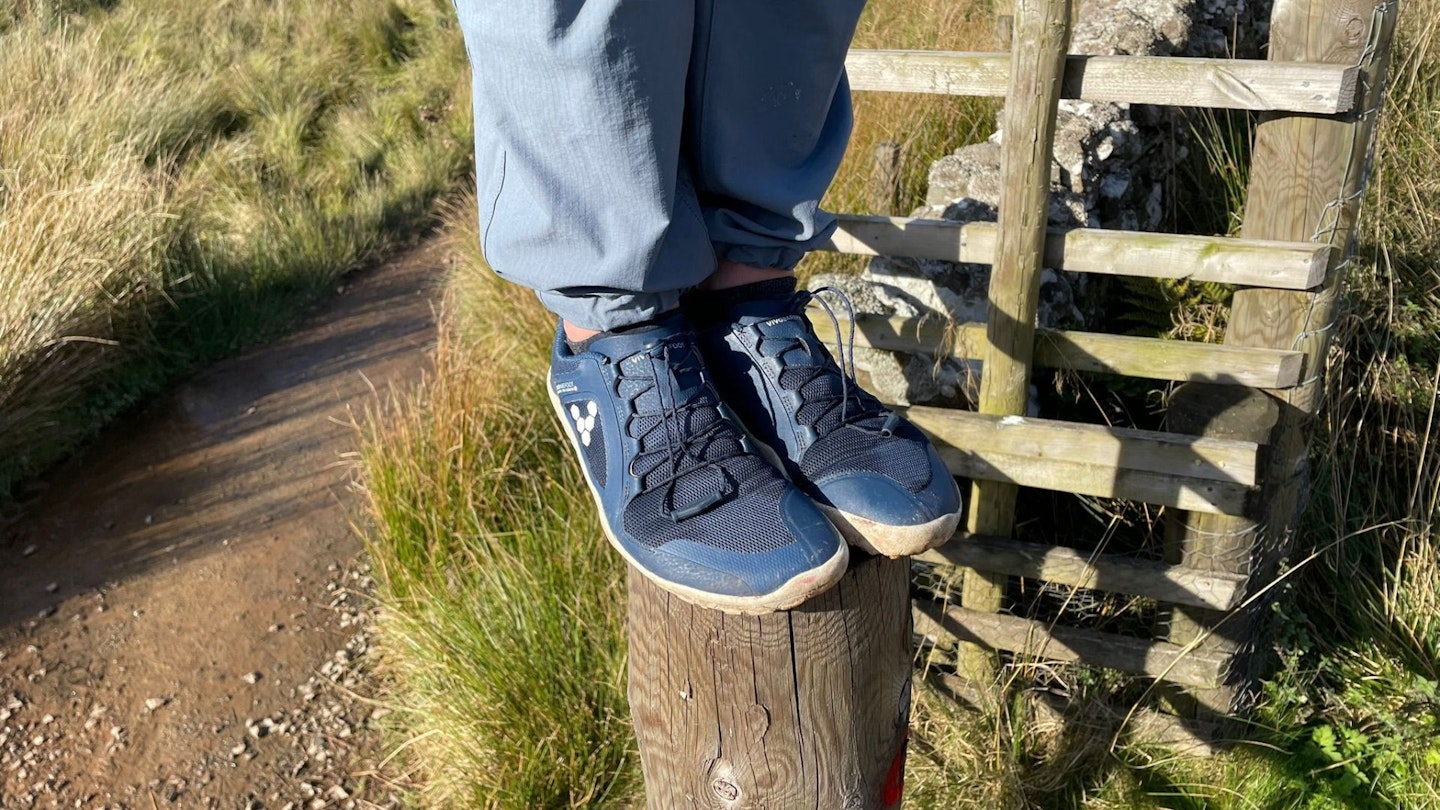
If you’ve never worn a barefoot shoe, let alone run in barefoot shoe, one of the more unusual features is the wide toe-box. At first, your foot might feel exposed and you could potentially be concerned that the shoe is too big, but soon enough you’ll start to love the freedom to wiggle.
There are plenty of benefits to a wide toe-box too! The College of Podiatry would argue that a wider toe-box allows air to circulate between the toes and therefore can help prevent the sucker that is athlete's foot. You’re also less likely to develop deformities like bunions and hammertoes, according to Pinnacle Hill Chiropractic.
Another, less ideal, feature is the no-tie, elastic shoelaces with a toggle. Personally, I prefer a traditional lace which allows for complex adjustment but luckily, it would be easy enough to replace them. I have plans to do so very soon.
Sustainability
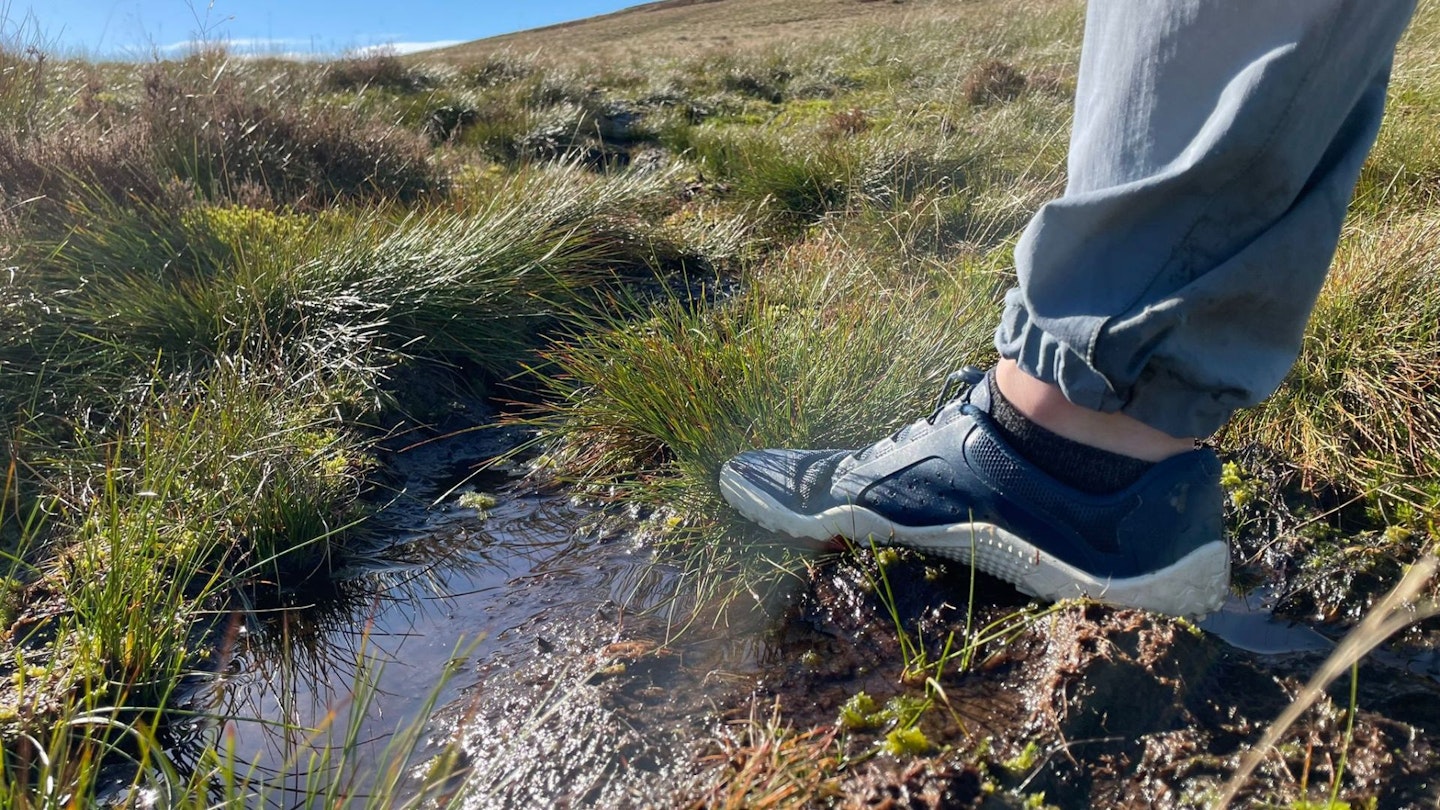
While living in the fast fashion era, it’s enormously important for me to be selective about what I’m buying, how it was made and how sustainable the materials are. It makes more sense, now than ever, to buy things to last, with durability and high-quality factored in.
According to Vivobarefoot, the shoe’s insole is, “Made from 98% recycled PU foam, which helps reduced waste and the use of virgin plastics.” For me, it’s also attractive that all the primary materials are made synthetically and don’t derive from animals since leather and suede, “A byproduct of the cattle industry, are major culprits of deforestation and greenhouse gas emissions globally,” say the WWF.
How we tested
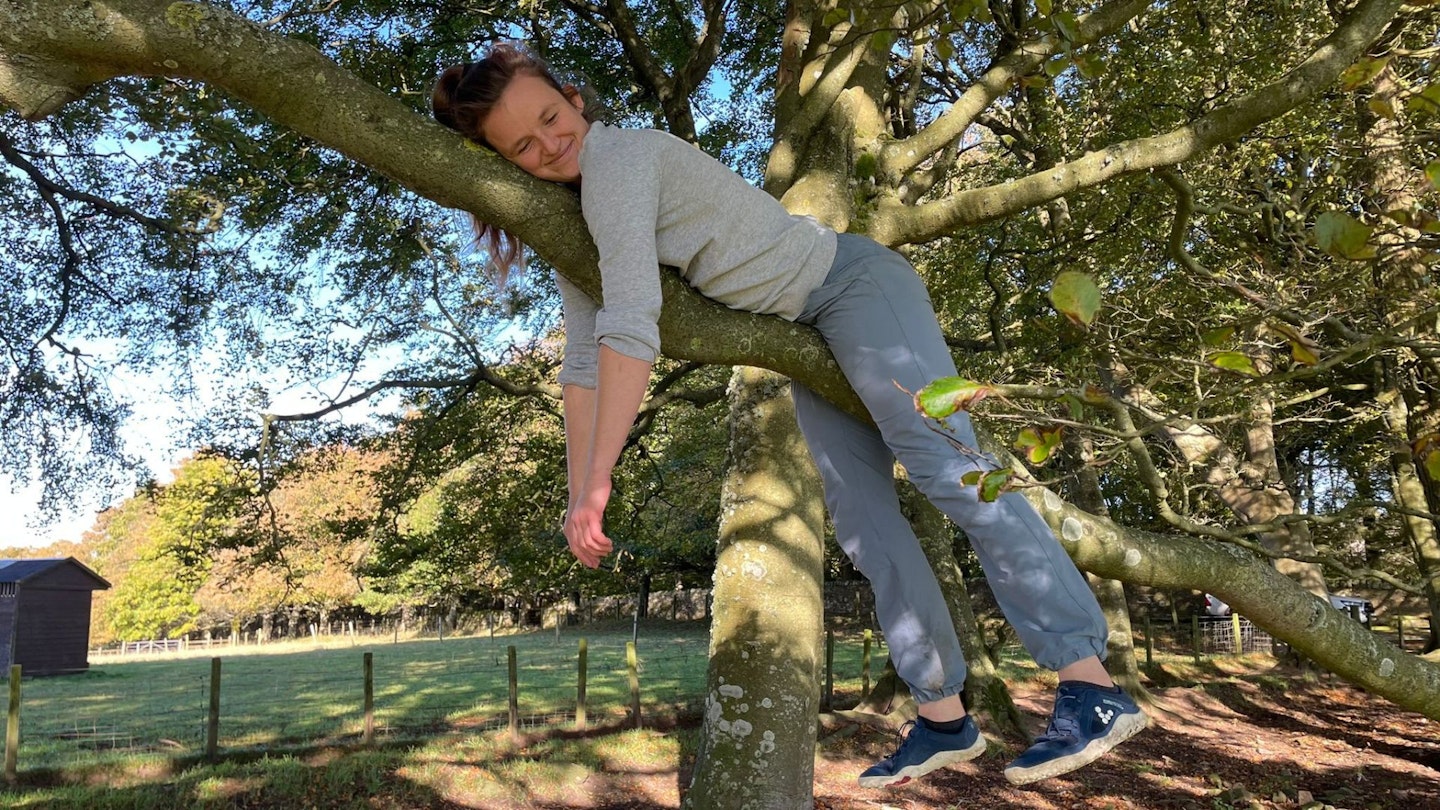
I put the Primus Trail FG IIs through their paces running and hiking through bogs, in heather, on firm trails, over rocky ground and on tarmac. I’ve been using them additionally as an everyday shoe since August, so it’s given me time to get used to the feel of them for more than just running and hiking.
Verdict

Overall, the more I become used to the Primus Trail II FG, the more I think I might invest in more of Vivobarefoot’s product line. I’ve tried to go back to regular running shoes since and they feel like I’m on stilts, (I even rolled my ankle once or twice). I feel grounded and light and floaty which means I can’t wait to get out for a run as often as possible.
About the author
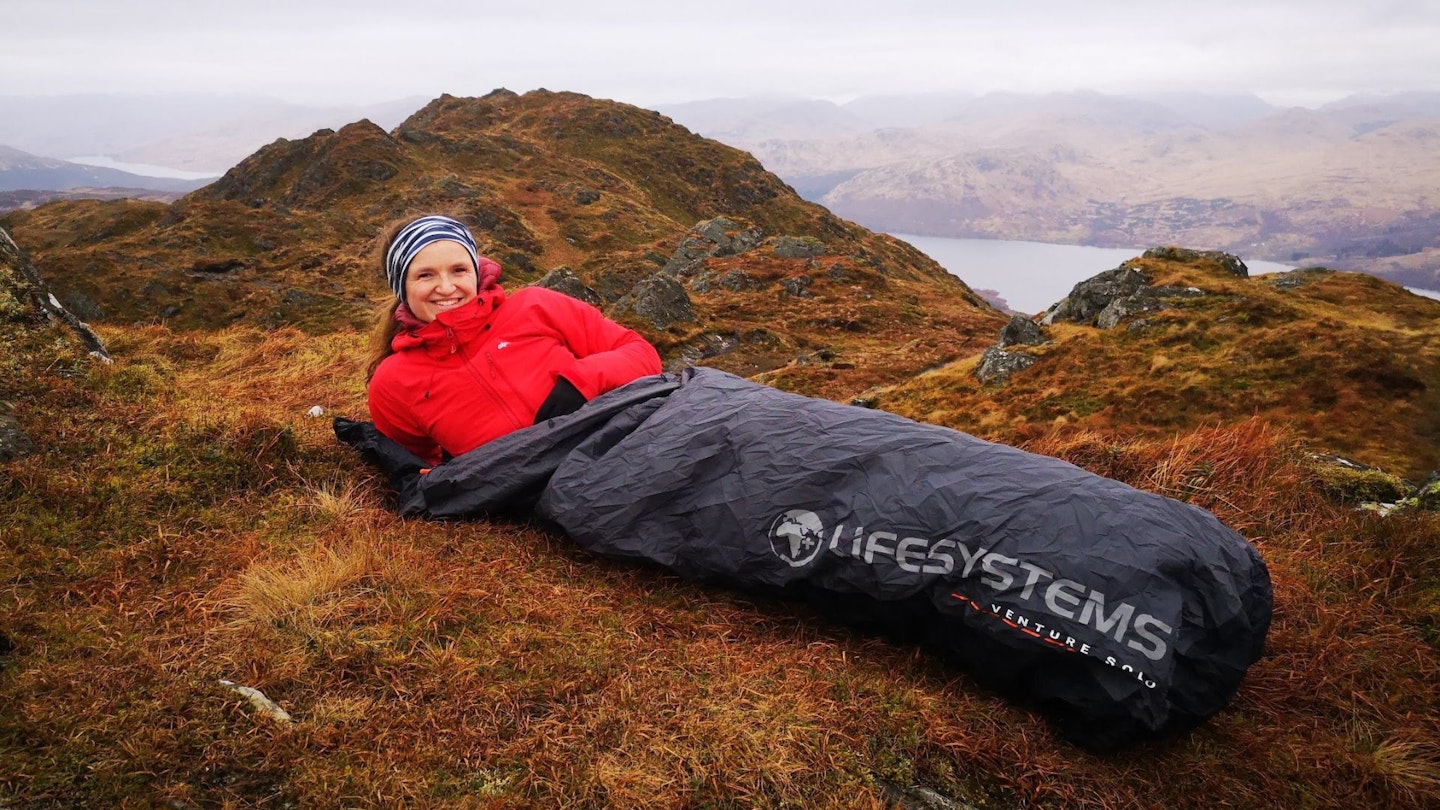
Eve MacCallum is a firefighter, Mountain Leader and champion pole-vaulter who lives and works in Edinburgh. This is her first review for LFTO, as she joins our Scottish testing contingent in putting the outdoor industry's leading products through their paces. Eve does not like marzipan or sitting still.
